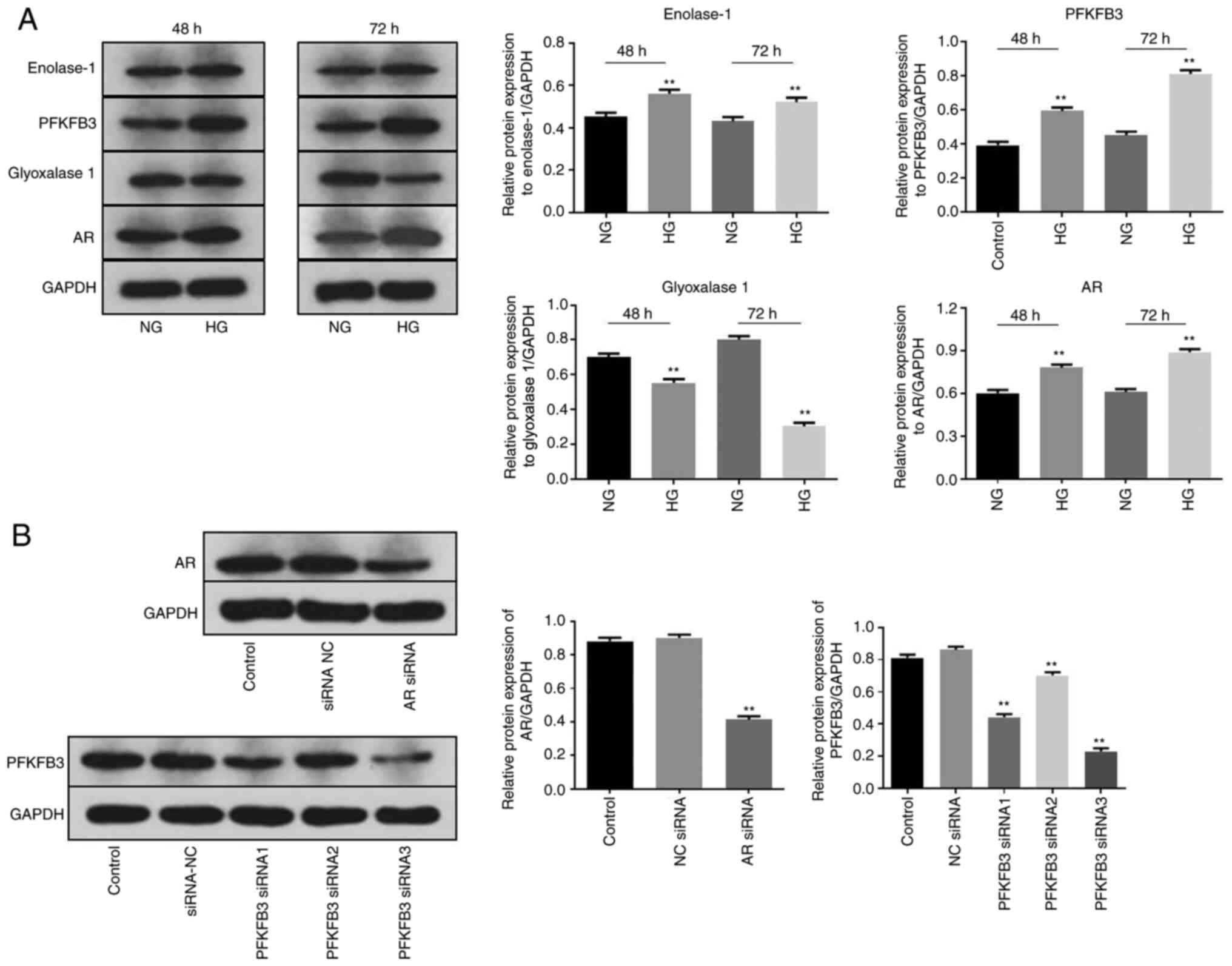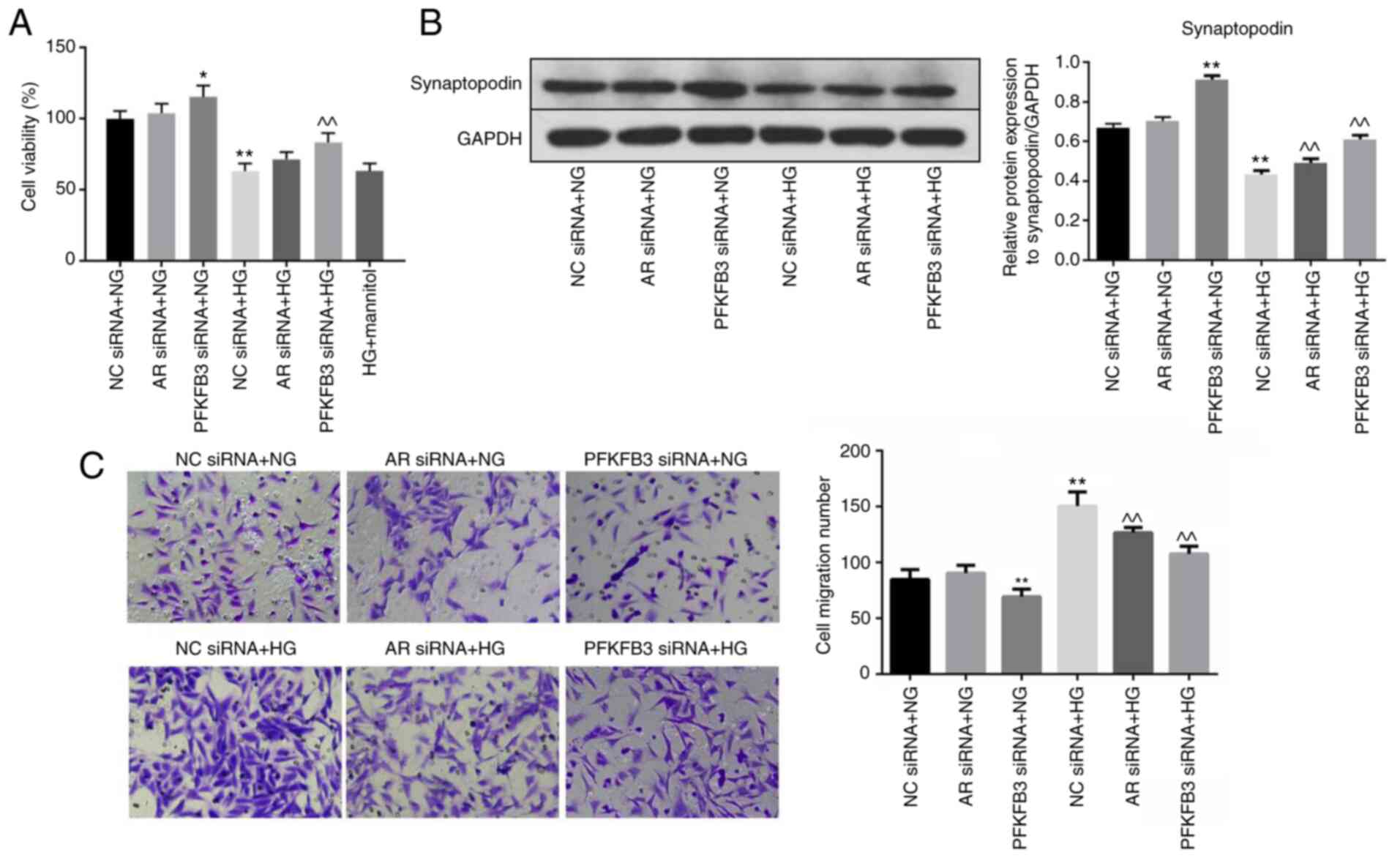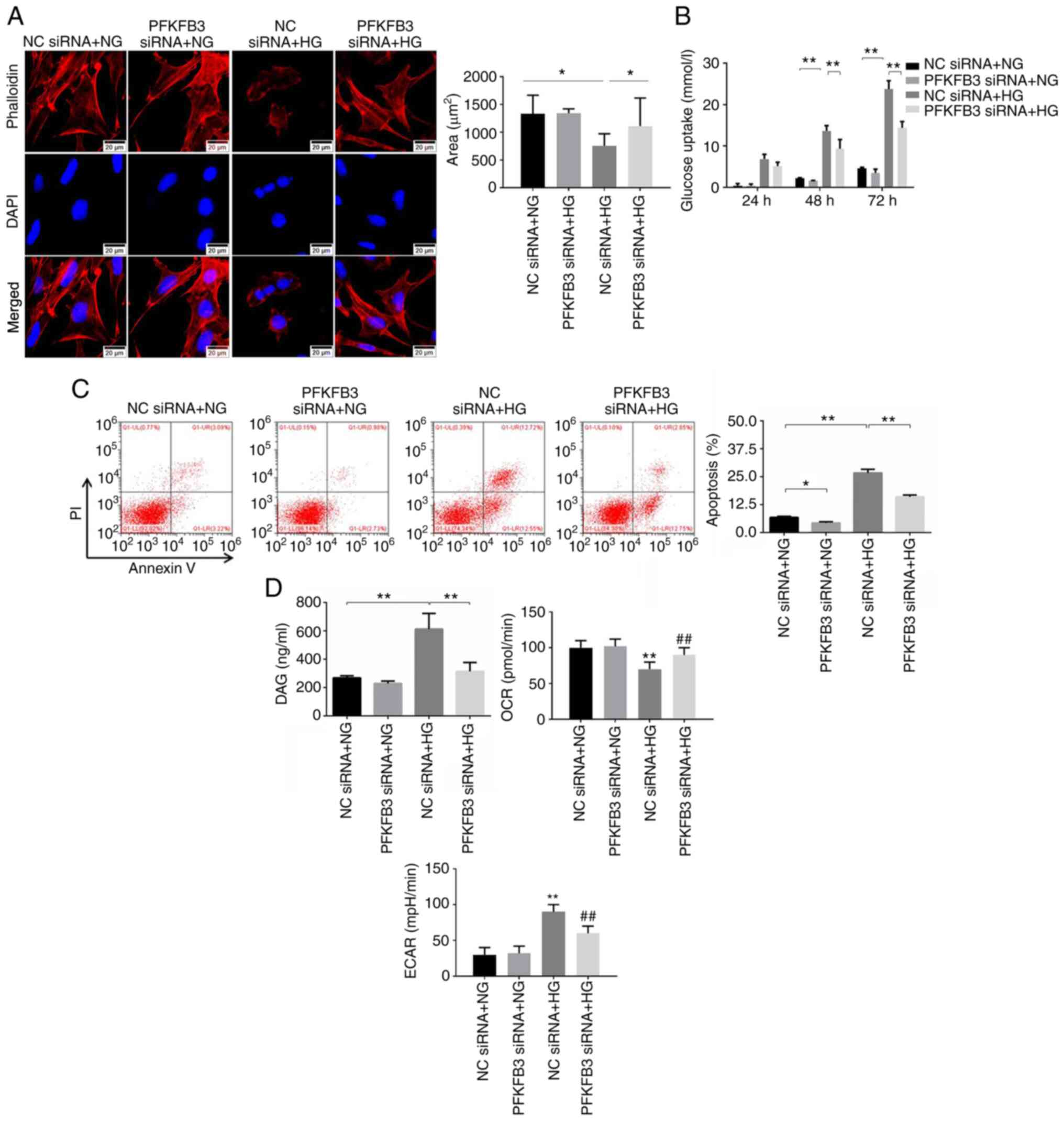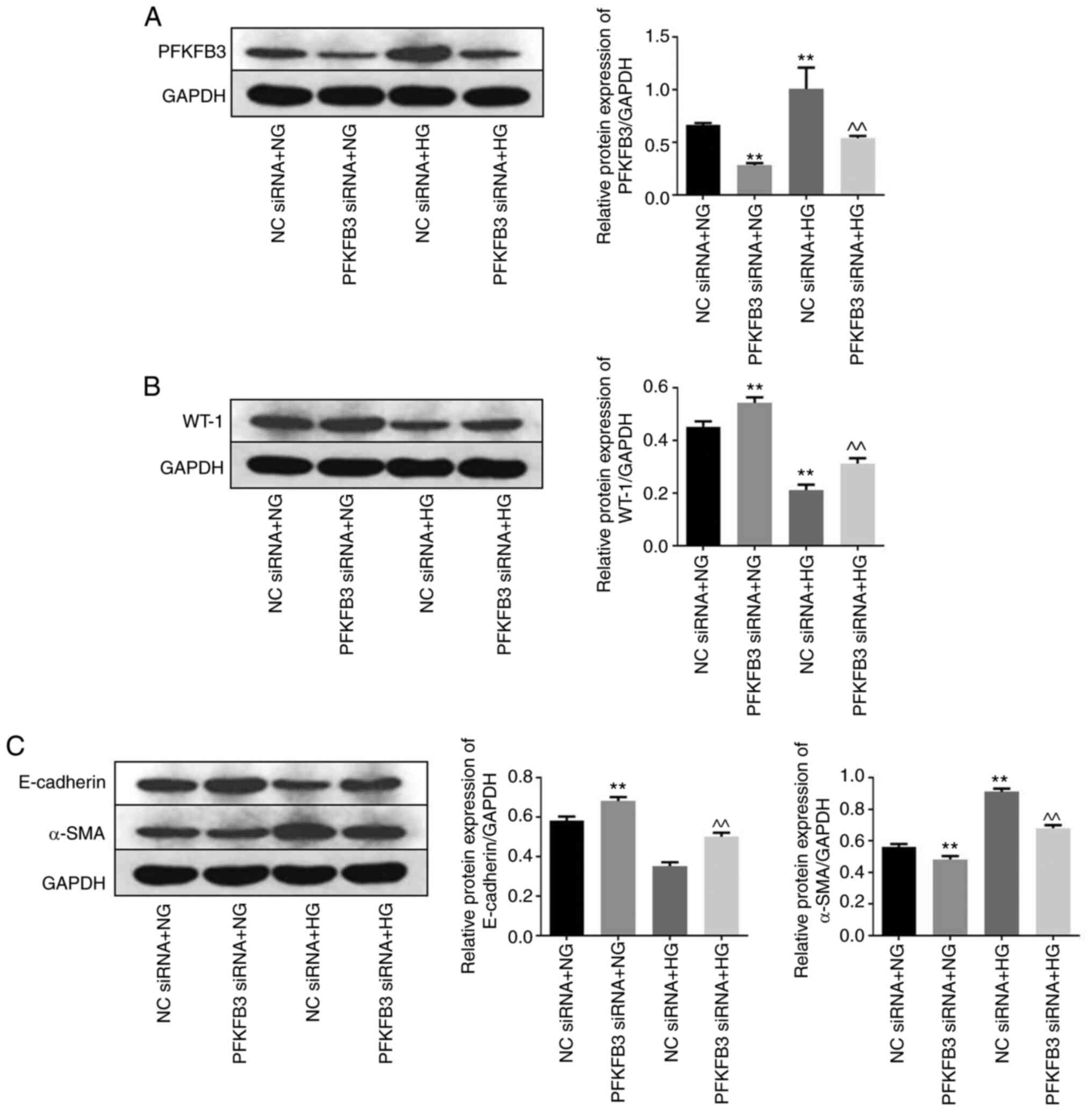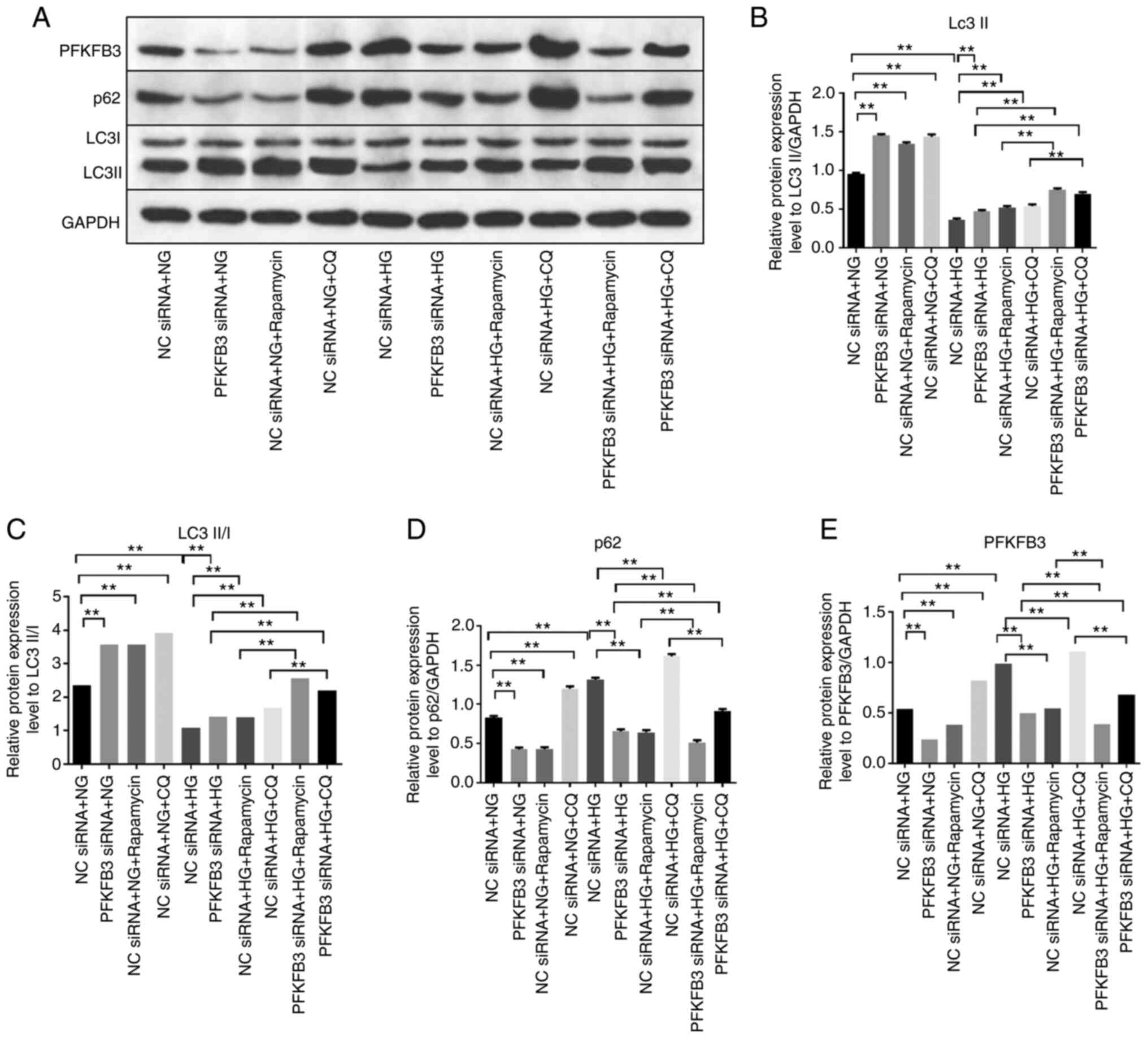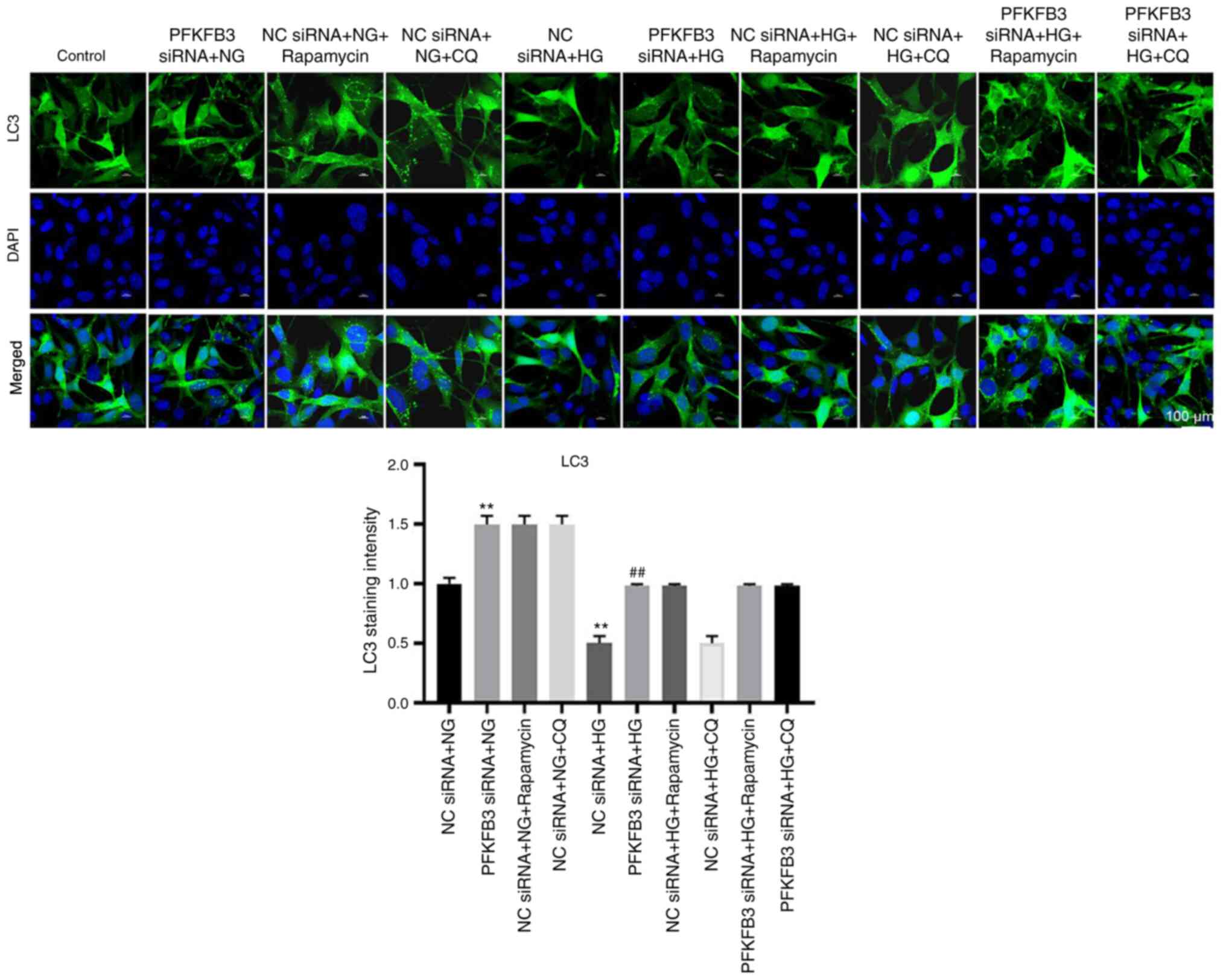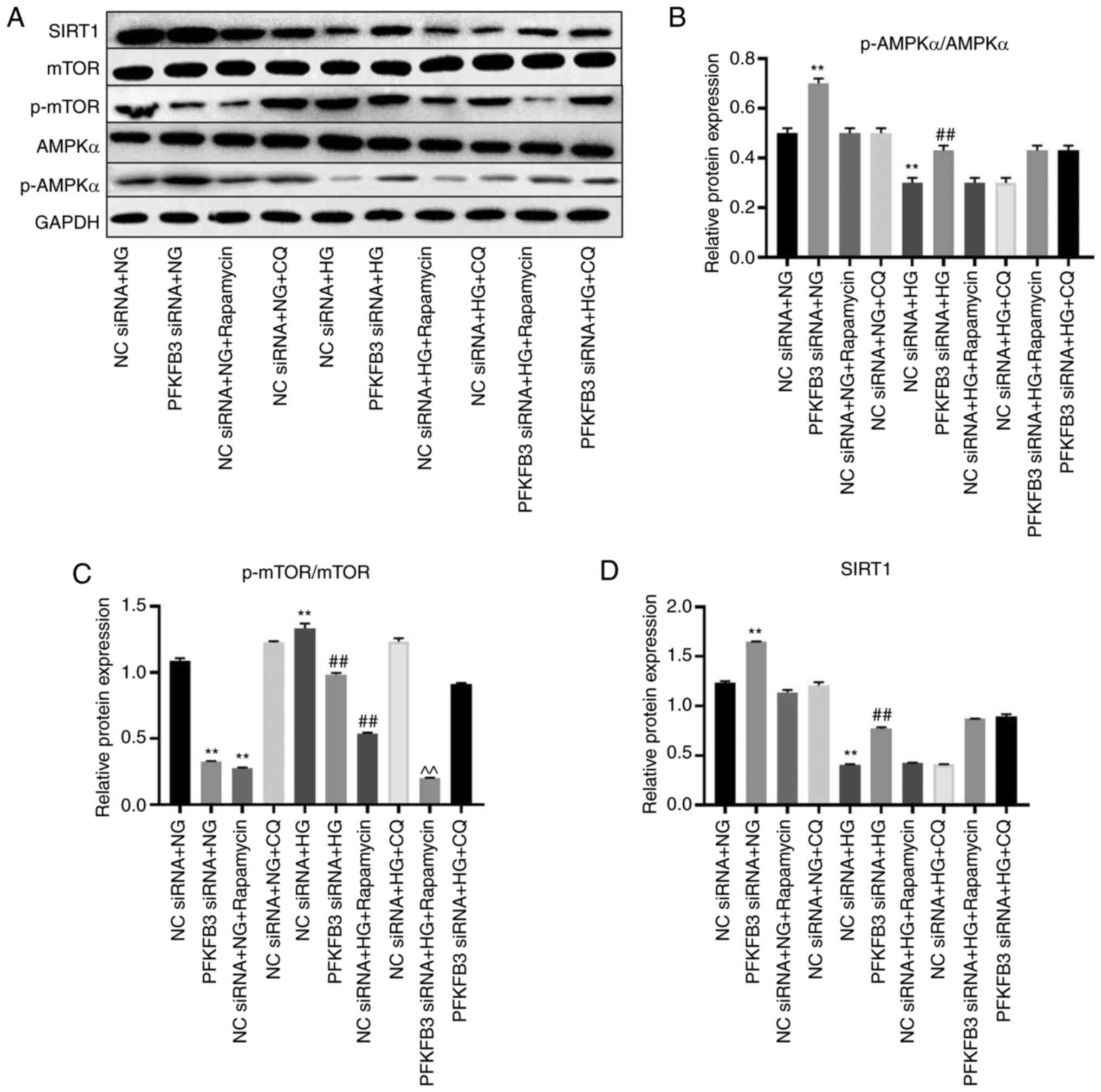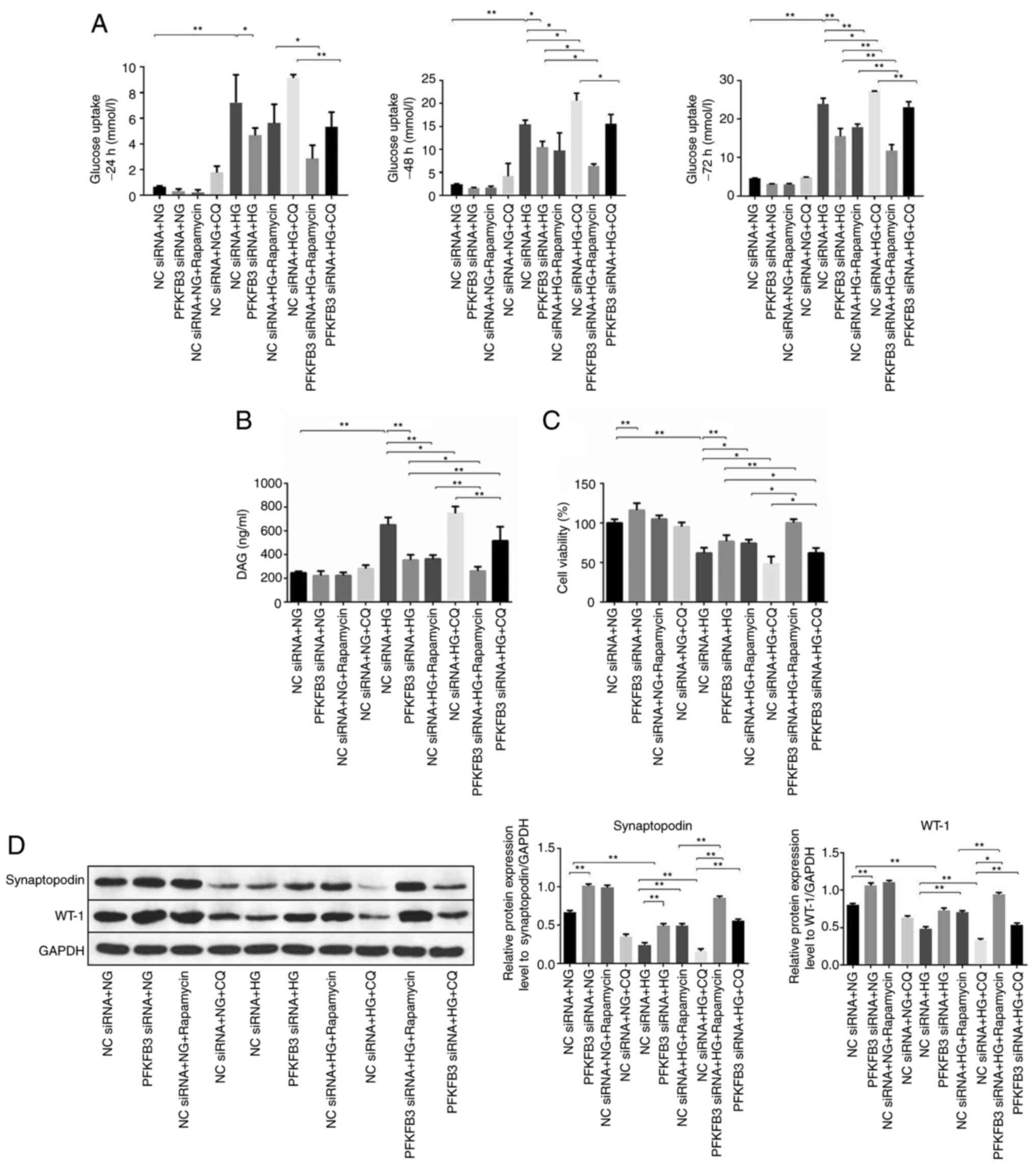|
1
|
Cankurtaran V, Inanc M, Tekin K and Turgut
F: Retinal microcirculation in predicting diabetic nephropathy in
type 2 diabetic patients without retinopathy. Ophthalmologica.
243:271–279. 2020. View Article : Google Scholar : PubMed/NCBI
|
|
2
|
Elbassuoni EA, Аziz NM and Habeeb WN: The
role of activation of KATP channels on hydrogen sulfide
induced renoprotective effect on diabetic nephropathy. J Cell
Physiol. 235:5223–5228. 2020. View Article : Google Scholar : PubMed/NCBI
|
|
3
|
Shao J, Xu H, Wu X and Xu Y: Epigenetic
activation of CTGF transcription by high glucose in renal tubular
epithelial cells is mediated by myocardin-related transcription
factor A. Cell Tissue Res. 379:549–559. 2020. View Article : Google Scholar : PubMed/NCBI
|
|
4
|
Al Shawaf E, Abu-Farha M, Devarajan S,
Alsairafi Z, Al-Khairi I, Cherian P, Ali H, Mathur A, Al-Mulla F,
Al Attar A, et al: ANGPTL4: A predictive marker for diabetic
nephropathy. J Diabetes Res. 2019:49431912019. View Article : Google Scholar : PubMed/NCBI
|
|
5
|
Du L, Wang J, Chen Y, Li X, Wang L, Li Y,
Jin X, Gu X, Hao M, Zhu X, et al: Novel biphenyl diester derivative
AB-38b inhibits NLRP3 inflammasome through Nrf2 activation in
diabetic nephropathy. Cell Biol Toxicol. 36:243–260. 2020.
View Article : Google Scholar : PubMed/NCBI
|
|
6
|
Liu L, Chen H, Yun J, Song L, Ma X, Luo S
and Song Y: miRNA-483-5p targets HDCA4 to regulate renal tubular
damage in diabetic nephropathy. Horm Metab Res. 2021.(Epub ahead of
print). doi: 10.1055/a-1480-7519. View Article : Google Scholar
|
|
7
|
Clem BF, O'Neal J, Tapolsky G, Clem AL,
Imbert-Fernandez Y, Kerr DA II, Klarer AC, Redman R, Miller DM,
Trent JO, et al: Targeting 6-phosphofructo-2-kinase (PFKFB3) as a
therapeutic strategy against cancer. Mol Cancer Ther. 12:1461–1470.
2013. View Article : Google Scholar : PubMed/NCBI
|
|
8
|
Lu L, Chen Y and Zhu Y: The molecular
basis of targeting PFKFB3 as a therapeutic strategy against cancer.
Oncotarget. 8:62793–62802. 2017. View Article : Google Scholar : PubMed/NCBI
|
|
9
|
Sarkar Bhattacharya S, Thirusangu P, Jin
L, Roy D, Jung D, Xiao Y, Staub J, Roy B, Molina JR and Shridhar V:
PFKFB3 inhibition reprograms malignant pleural mesothelioma to
nutrient stress-induced macropinocytosis and ER stress as
independent binary adaptive responses. Cell Death Dis. 10:7252019.
View Article : Google Scholar : PubMed/NCBI
|
|
10
|
Tao L, Yu H, Liang R, Jia R, Wang J, Jiang
K and Wang Z: Rev-erbα inhibits proliferation by reducing
glycolytic flux and pentose phosphate pathway in human gastric
cancer cells. Oncogenesis. 8:572019. View Article : Google Scholar : PubMed/NCBI
|
|
11
|
Wade SM, Ohnesorge N, McLoughlin H,
Biniecka M, Carter SP, Trenkman M, Cunningham CC, McGarry T,
Canavan M, Kennedy BN, et al: Dysregulated miR-125a promotes
angiogenesis through enhanced glycolysis. EBioMedicine. 47:402–413.
2019. View Article : Google Scholar : PubMed/NCBI
|
|
12
|
Li YJ, Lei YH, Yao N, Wang CR, Hu N, Ye
WC, Zhang DM and Chen ZS: Autophagy and multidrug resistance in
cancer. Chin J Cancer. 36:522017. View Article : Google Scholar : PubMed/NCBI
|
|
13
|
Ravanan P, Srikumar IF and Talwar P:
Autophagy: The spotlight for cellular stress responses. Life Sci.
188:53–67. 2017. View Article : Google Scholar : PubMed/NCBI
|
|
14
|
Zhang L: Pharmacokinetics and drug
delivery systems for puerarin, a bioactive flavone from traditional
Chinese medicine. Drug Deliv. 26:860–869. 2019. View Article : Google Scholar : PubMed/NCBI
|
|
15
|
Lin X, Chen Y, Zhang P, Chen G, Zhou Y and
Yu X: The potential mechanism of postoperative cognitive
dysfunction in older people. Exp Gerontol. 130:1107912020.
View Article : Google Scholar : PubMed/NCBI
|
|
16
|
Son YO: Molecular mechanisms of
nickel-induced carcinogenesis. Endocr Metab Immune Disord Drug
Targets. 20:1015–1023. 2020. View Article : Google Scholar : PubMed/NCBI
|
|
17
|
Tang Q, Chen Z, Zhao L and Xu H: Circular
RNA hsa_circ_0000515 acts as a miR-326 sponge to promote cervical
cancer progression through up-regulation of ELK1. Aging (Albany
NY). 11:9982–9999. 2019. View Article : Google Scholar : PubMed/NCBI
|
|
18
|
Wang Q, Li R, Xiao Z and Hou C: Lycopene
attenuates high glucose-mediated apoptosis in MPC5 podocytes by
promoting autophagy via the PI3K/AKT signaling pathway. Exp Ther
Med. 20:2870–2878. 2020.PubMed/NCBI
|
|
19
|
Sawada N and Arany Z: Metabolic regulation
of angiogenesis in diabetes and aging. Physiology (Bethesda).
32:290–307. 2017.PubMed/NCBI
|
|
20
|
Mizukami H, Osonoi S, Takaku S, Yamagishi
SI, Ogasawara S, Sango K, Chung S and Yagihashi S: Role of
glucosamine in development of diabetic neuropathy independent of
the aldose reductase pathway. Brain Commun. 2:fcaa1682020.
View Article : Google Scholar : PubMed/NCBI
|
|
21
|
Liu B, He X, Li S, Xu B, Birnbaumer L and
Liao Y: Deletion of diacylglycerol-responsive TRPC genes attenuates
diabetic nephropathy by inhibiting activation of the TGFβ1
signaling pathway. Am J Transl Res. 9:5619–5630. 2017.PubMed/NCBI
|
|
22
|
Chen JN, Li T, Cheng L, Qin TS, Sun YX,
Chen CT, He YZ, Liu G, Yao D, Wei Y, et al: Synthesis and in vitro
anti-bladder cancer activity evaluation of quinazolinyl-arylurea
derivatives. Eur J Med Chem. 205:1126612020. View Article : Google Scholar : PubMed/NCBI
|
|
23
|
Shen Y, Tong ZW, Zhou Y, Sun Y, Xie Y, Li
R and Liu H: Inhibition of lncRNA-PAX8-AS1-N directly associated
with VEGF/TGF-β1/8-OhdG enhances podocyte apoptosis in diabetic
nephropathy. Eur Rev Med Pharmacol Sci. 24:6864–6872.
2020.PubMed/NCBI
|
|
24
|
He J, Gao HX, Yang N, Zhu XD, Sun RB, Xie
Y, Zeng CH, Zhang JW, Wang JK, Ding F, et al: The aldose reductase
inhibitor epalrestat exerts nephritic protection on diabetic
nephropathy in db/db mice through metabolic modulation. Acta
Pharmacol Sin. 40:86–97. 2019. View Article : Google Scholar : PubMed/NCBI
|
|
25
|
Albers JW and Pop-Busui R: Diabetic
neuropathy: Mechanisms, emerging treatments, and subtypes. Curr
Neurol Neurosci Rep. 14:4732014. View Article : Google Scholar : PubMed/NCBI
|
|
26
|
Qian X, Xu W, Xu J, Shi Q, Li J, Weng Y,
Jiang Z, Feng L, Wang X, Zhou J and Jin H: Enolase 1 stimulates
glycolysis to promote chemoresistance in gastric cancer.
Oncotarget. 8:47691–47708. 2017. View Article : Google Scholar : PubMed/NCBI
|
|
27
|
Almacellas E, Pelletier J, Manzano A,
Gentilella A, Ambrosio S, Mauvezin C and Tauler A:
Phosphofructokinases axis controls glucose-dependent mTORC1
activation driven by E2F1. iScience. 20:434–448. 2019. View Article : Google Scholar : PubMed/NCBI
|
|
28
|
ElGamal H and Munusamy S: Aldose reductase
as a drug target for treatment of diabetic nephropathy: Promises
and challenges. Protein Pept Lett. 24:71–77. 2017.PubMed/NCBI
|
|
29
|
Liu YW, Cheng YQ, Liu XL, Hao YC, Li Y,
Zhu X, Zhang F and Yin XX: Mangiferin upregulates glyoxalase 1
through activation of Nrf2/ARE signaling in central neurons
cultured with high glucose. Mol Neurobiol. 54:4060–4070. 2017.
View Article : Google Scholar : PubMed/NCBI
|
|
30
|
Wong SHM, Fang CM, Chuah LH, Leong CO and
Ngai SC: E-cadherin: Its dysregulation in carcinogenesis and
clinical implications. Crit Rev Oncol Hematol. 121:11–22. 2018.
View Article : Google Scholar : PubMed/NCBI
|
|
31
|
Saitoh M: Involvement of partial EMT in
cancer progression. J Biochem. 164:257–264. 2018. View Article : Google Scholar : PubMed/NCBI
|
|
32
|
Gao C, Chen J, Fan F, Long Y, Tang S,
Jiang C, Wang J and Xu Y and Xu Y: RIPK2-mediated autophagy and
negatively regulated ROS-NLRP3 inflammasome signaling in GMCs
stimulated with high glucose. Mediators Inflamm. 2019:62075632019.
View Article : Google Scholar : PubMed/NCBI
|
|
33
|
Gong J, Zhan H, Li Y, Zhang W, Jin J and
He Q: Kruppel-like factor 4 ameliorates diabetic kidney disease by
activating autophagy via the mTOR pathway. Mol Med Rep.
20:3240–3248. 2019.PubMed/NCBI
|
|
34
|
Sankrityayan H, Oza MJ, Kulkarni YA, Mulay
SR and Gaikwad AB: ER stress response mediates diabetic
microvascular complications. Drug Discov Today. 24:2247–2257. 2019.
View Article : Google Scholar : PubMed/NCBI
|
|
35
|
Tu Q, Li Y, Jin J, Jiang X, Ren Y and He
Q: Curcumin alleviates diabetic nephropathy via inhibiting podocyte
mesenchymal transdifferentiation and inducing autophagy in rats and
MPC5 cells. Pharm Biol. 57:778–786. 2019. View Article : Google Scholar : PubMed/NCBI
|
|
36
|
Hou Y, Lin S, Qiu J, Sun W, Dong M, Xiang
Y, Wang L and Du P: NLRP3 inflammasome negatively regulates
podocyte autophagy in diabetic nephropathy. Biochem Biophys Res
Commun. 521:791–798. 2020. View Article : Google Scholar : PubMed/NCBI
|
|
37
|
Syed AA, Reza MI, Garg R, Goand UK and
Gayen JR: Cissus quadrangularis extract attenuates diabetic
nephropathy by altering SIRT1/DNMT1 axis. J Pharm Pharmacol. Jun
15–2021.(Epub ahead of print). doi: 10.1093/jpp/rgab078. View Article : Google Scholar : PubMed/NCBI
|
|
38
|
Guo L, Tan K, Luo Q and Bai X:
Dihydromyricetin promotes autophagy and attenuates renal
interstitial fibrosis by regulating miR-155-5p/PTEN signaling in
diabetic nephropathy. Bosn J Basic Med Sci. 20:372–380.
2020.PubMed/NCBI
|
|
39
|
Bu J, Shi S, Wang HQ, Niu XS, Zhao ZF, Wu
WD, Zhang XL, Ma Z, Zhang YJ, Zhang H and Zhu Y: Acacetin protects
against cerebral ischemia-reperfusion injury via the NLRP3
signaling pathway. Neural Regen Res. 14:605–612. 2019. View Article : Google Scholar : PubMed/NCBI
|
|
40
|
Zhuang L, Jin G, Hu X, Yang Q and Shi Z:
The inhibition of SGK1 suppresses epithelial-mesenchymal transition
and promotes renal tubular epithelial cell autophagy in diabetic
nephropathy. Am J Transl Res. 11:4946–4956. 2019.PubMed/NCBI
|
|
41
|
Wang Y, Zhang X, Wang P, Shen Y, Yuan K,
Li M, Liang W and Que H: Sirt3 overexpression alleviates
hyperglycemia-induced vascular inflammation through regulating
redox balance, cell survival, and AMPK-mediated mitochondrial
homeostasis. J Recept Signal Transduct Res. 39:341–349. 2019.
View Article : Google Scholar : PubMed/NCBI
|
|
42
|
Woo CY, Kc R, Kim M, Kim HS, Baek JY and
Koh EH: Autophagic flux defect in diabetic kidney disease results
in megamitochondria formation in podocytes. Biochem Biophys Res
Commun. 521:660–667. 2020. View Article : Google Scholar : PubMed/NCBI
|
|
43
|
Yang Z and Klionsky DJ: Eaten alive: A
history of macroautophagy. Nat Cell Biol. 12:814–822. 2010.
View Article : Google Scholar : PubMed/NCBI
|
|
44
|
Dasgupta S: Mitochondrion: I am more than
a fuel server. Ann Transl Med. 7:5942019. View Article : Google Scholar : PubMed/NCBI
|
|
45
|
Wu Q, Tian AL, Li B, Leduc M, Forveille S,
Hamley P, Galloway W, Xie W, Liu P, Zhao L, et al: IGF1 receptor
inhibition amplifies the effects of cancer drugs by autophagy and
immune-dependent mechanisms. J Immunother Cancer. 9:e0027222021.
View Article : Google Scholar : PubMed/NCBI
|
|
46
|
Kommalapati VK, Kumar D and Tangutur AD:
Quisinostat mediated autophagy is associated with differentiation
in neuroblastoma SK-N-SH cells. Mol Biol Rep. 48:4973–4979. 2021.
View Article : Google Scholar : PubMed/NCBI
|
|
47
|
Xu J, Liu LQ, Xu LL, Xing Y and Ye S:
Metformin alleviates renal injury in diabetic rats by inducing
Sirt1/FoxO1 autophagic signal axis. Clin Exp Pharmacol Physiol.
47:599–608. 2020. View Article : Google Scholar : PubMed/NCBI
|
|
48
|
Ye X, Zhou XJ and Zhang H: Autophagy in
immune-related renal disease. J Immunol Res. 2019:50716872019.
View Article : Google Scholar : PubMed/NCBI
|
|
49
|
Alvarez-Cilleros D, Lopez-Oliva ME, Martin
MA and Ramos S: Cocoa ameliorates renal injury in Zucker diabetic
fatty rats by preventing oxidative stress, apoptosis and
inactivation of autophagy. Food Funct. 10:7926–7939. 2019.
View Article : Google Scholar : PubMed/NCBI
|
|
50
|
Chen L, Zhao L, Samanta A, Mahmoudi SM,
Buehler T, Cantilena A, Vincent RJ, Girgis M, Breeden J, Asante S,
et al: STAT3 balances myocyte hypertrophy vis-a-vis autophagy in
response to Angiotensin II by modulating the AMPKα/mTOR axis. PLoS
One. 12:e01798352017. View Article : Google Scholar : PubMed/NCBI
|
|
51
|
Zhang P, Liu X, Li H, Chen Z, Yao X, Jin J
and Ma X: TRPC5-induced autophagy promotes drug resistance in
breast carcinoma via CaMKKβ/AMPKα/mTOR pathway. Sci Rep.
7:31582017. View Article : Google Scholar : PubMed/NCBI
|
|
52
|
La Belle Flynn A, Calhoun BC, Sharma A,
Chang JC, Almasan A and Schiemann WP: Autophagy inhibition elicits
emergence from metastatic dormancy by inducing and stabilizing
Pfkfb3 expression. Nat Commun. 10:36682019. View Article : Google Scholar : PubMed/NCBI
|
|
53
|
Chu CW, Ko HJ, Chou CH, Cheng TS, Cheng
HW, Liang YH, Lai YL, Lin CY, Wang C, Loh JK, et al: Thioridazine
enhances P62-Mediated autophagy and apoptosis through Wnt/β-catenin
signaling pathway in glioma cells. Int J Mol Sci. 20:4732019.
View Article : Google Scholar : PubMed/NCBI
|
|
54
|
Guo FX, Wu Q, Li P, Zheng L, Ye S, Dai XY,
Kang CM, Lu JB, Xu BM, Xu YJ, et al: The role of the
LncRNA-FA2H-2-MLKL pathway in atherosclerosis by regulation of
autophagy flux and inflammation through mTOR-dependent signaling.
Cell Death Differ. 26:1670–1687. 2019. View Article : Google Scholar : PubMed/NCBI
|
|
55
|
Guo H, Ding H, Yan Y, Chen Q, Zhang J,
Chen B and Cao J: Intermittent hypoxia-induced autophagy via
AMPK/mTOR signaling pathway attenuates endothelial apoptosis and
dysfunction in vitro. Sleep Breath. 2021.(Epub ahead of print).
View Article : Google Scholar
|
|
56
|
Chen J, Wang L, Liu WH, Shi J, Zhong Y,
Liu SJ and Liu SM: Aspirin protects human coronary artery
endothelial cells by inducing autophagy. Physiol Int. 107:294–305.
2020. View Article : Google Scholar : PubMed/NCBI
|
|
57
|
Wang Z, Liu N, Liu K, Zhou G, Gan J, Wang
Z, Shi T, He W, Wang L, Guo T, et al: Autophagy mediated CoCrMo
particle-induced peri-implant osteolysis by promoting osteoblast
apoptosis. Autophagy. 11:2358–2369. 2015. View Article : Google Scholar : PubMed/NCBI
|
|
58
|
Hale AN, Ledbetter DJ, Gawriluk TR and
Rucker EB III: Autophagy: Regulation and role in development.
Autophagy. 9:951–972. 2013. View Article : Google Scholar : PubMed/NCBI
|
|
59
|
Corral-Ramos C, Barrios R, Ayté J and
Hidalgo E: TOR and MAP kinase pathways synergistically regulate
autophagy in response to nutrient depletion in fission yeast.
Autophagy. Jun 23–2021.(Epub ahead of print). doi:
10.1080/15548627.2021.1935522. View Article : Google Scholar : PubMed/NCBI
|
|
60
|
Gray JP, Uddin MN, Chaudhari R, Sutton MN,
Yang H, Rask P, Locke H, Engel BJ, Batistatou N, Wang J, et al:
Directed evolution of cyclic peptides for inhibition of autophagy.
Chem Sci. 12:3526–3543. 2021. View Article : Google Scholar : PubMed/NCBI
|















